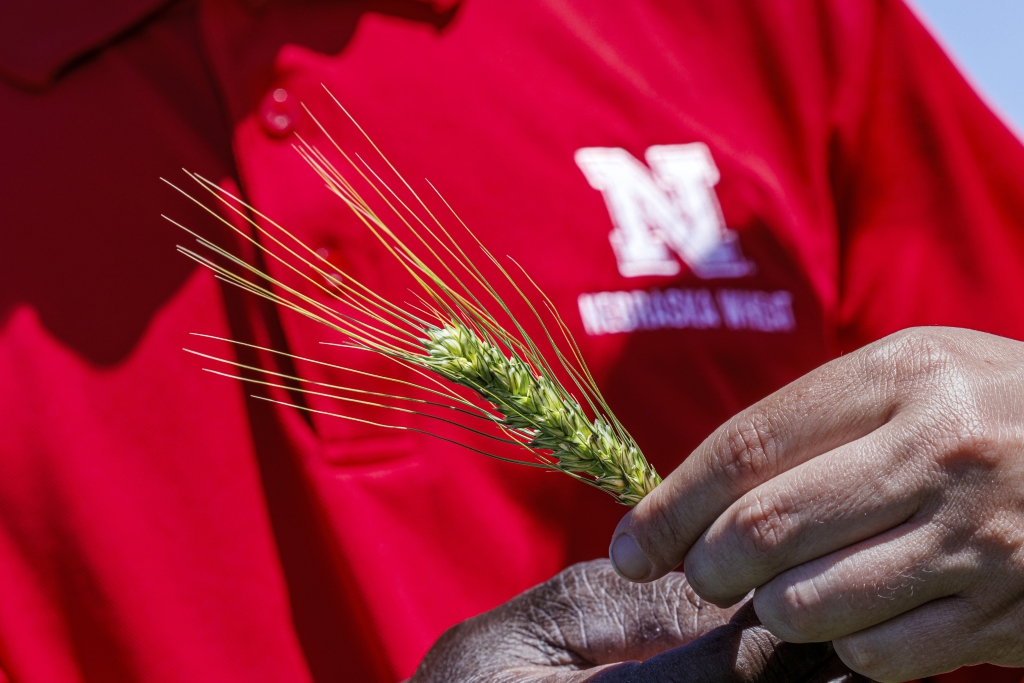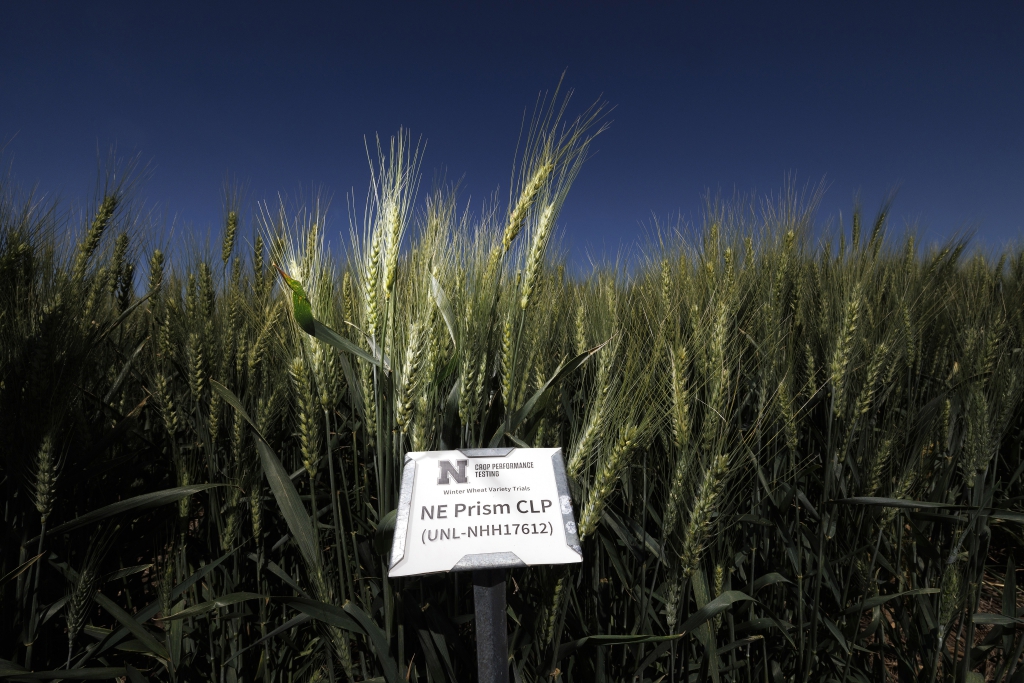Geitner Simmons, June 13, 2024
Nebraska-developed wheat variety to address new fungal threat
In the wake of heightened wheat concern in the Nebraska Panhandle in 2023, this year brings positive news: The University of Nebraska–Lincoln is releasing a new wheat variety, NE Prism CLP, that stands out for its resistance to fungal disease, including fusarium head blight.
Last spring, Husker faculty members Katherine Frels and Stephen Wegulo began receiving concerned phone calls from Nebraska wheat growers. Something strange, the callers said, was going on in wheat fields in parts of the Panhandle.
The farmers were seeing field conditions they hadn’t encountered before: Their winter wheat had reached maturity, but the kernels had none of their familiar golden color and robust appearance. Instead, they were bleached and sickly.
Tombstones, such kernels are called — blighted irreparably by fungal assault.
The culprit was fusarium head blight, a notoriously destructive plant disease rarely seen in western Nebraska. The disease, also known as scab, undercuts yield and contaminates the grain with mycotoxins harmful to humans and animals.
“Producers were caught off-guard,” said Frels, Nebraska’s small grains breeder and an assistant professor of agronomy and horticulture.
The Panhandle region, which produces more than half of the state’s wheat, is normally free of the disease because that part of the state rarely receives enough rain to trigger the release of harmful fungal spores during wheat flowering.
But 2023 was not a normal year.

While drought kept a tight grip on much of eastern Nebraska last year, the Panhandle received above-average rainfall before and during wheat flowering, and the moisture enabled a rare outbreak of fusarium head blight. Wheat-producing areas in Kansas and Colorado were similarly affected.
“If there is a lot of rain two to three weeks before flowering and that rain is consistent into the flowering period for wheat, we know that the risk for fusarium head blight is pretty high,” said Wegulo, professor of plant pathology.
Wegulo, who is also a plant pathologist for Nebraska Extension, does extensive surveys of Nebraska wheat field conditions each spring and provides regular updates in CropWatch.
The new wheat variety, a two-gene Clearfield package, is available through NU Horizons Genetics and will be a key topic for Husker representatives when they meet with producers during the annual wheat field days in June.
Nebraska producers had requested a new Clearfield variety, and the university responded after extensive field testing, Frels said. The variety “has some other good things in the disease package, like some stripe rust resistance and stem rust resistance,” she said. “That’s what our growers expect from us.”
Fusarium head blight is best addressed though a two-pronged approach, using a crop variety with genetic resistance supplemented by appropriately timed fungicide application.
“For growers, you really can’t see it until it’s too late to do anything,” Frels said. “That’s why we want to have at least that moderate resistance out, and then ideally if the environment is right, we recommend that growers also spray fungicides to have the best chance of highly reducing the risk.”
Producers can benefit by regularly monitoring conditions through a widely used online fusarium risk tool, Frels and Wegulo said.

Wegulo and research technologist Julie Stevens carry out extensive testing on potential new wheat lines in the university’s breeding program, checking for resistance to three diseases (stem rust, leaf rust and fusarium head blight). Partner labs elsewhere in the country check for additional diseases before any new variety can move forward for consideration.
“We give that data to Katherine, and she will use that data to select her lines, looking at the level of disease resistance and other agronomic qualities,” Wegulo said. “We try to identify wheat varieties with resistance and then combine the resistance with fungicide application and determine the amount of disease control you get.”
The university’s efforts benefit greatly from the federal funding provided by the U.S. Wheat and Barley Scab Initiative, which promotes research to develop innovative approaches to address fusarium head blight. Some farm-state lawmakers, pointing to the value of the research, have called for the program’s funding to be increased as part of the next farm bill.
Wegulo is giving a presentation at an international conference in Athens, Greece, this summer on how climate change influences fusarium head blight.
“With climate change, we’re seeing this shift toward more intense precipitation in places where we traditionally have not seen it,” he said.
That was the case in Nebraska in 2023, as the rainfall amount in the Panhandle exceeded the norm.
“We cannot rule out that we are probably going to see fusarium head blight in the west more frequently than in the past,” Wegulo said.





